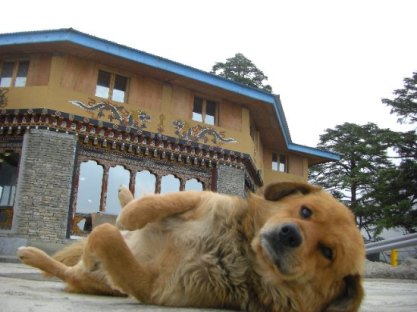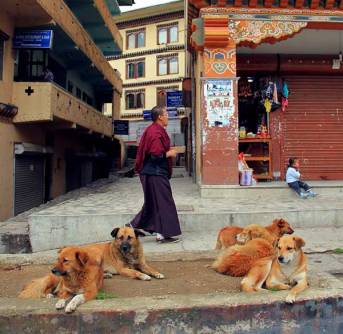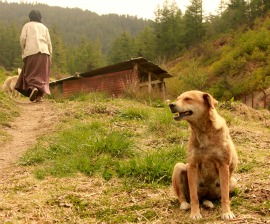From what I have read and seen (including on Google Maps) there are a lot of dogs in Bhutan, both strays and pets. Some people consider this a serious problem, partly because the expanding population of dogs has increased the risk of bites and rabies. The School for Field Studies (SFS) requires that all of their students get three pre-exposure rabies shots in the months before traveling to Bhutan. This is pretty unusual. Many people are surprised when I say I need to get rabies shots, but according to SFS, “rabies is an epidemic in Bhutan.”
I just read an article from Kuensel, Bhutan’s national newspaper, discussing the dog population in Bhutan. The implementation of dog population management strategies began in the early 1970s but due to cultural reasons proved unsuccessful (the article does not elaborate on why exactly).
Many of the dogs who live on the streets are pets, but there is no pet dog policy to ensure that owners keep their dogs inside or on a leash and make sure they don’t bite people. Tenzin Dhendup, the Agriculture Secretary, has said that Bhutan could adopt a pet dog policy, but that it would take time to implement and enforce.
This summer I am interning for the Humane Society of the United States (HSUS), America’s largest animal protection and advocacy organization, which is mainly to say that I care a lot for animals of all kinds and I find this situation sad, for the dogs and the people. The Chief Executive Officer of Humane Society International (HSI), while attending a dog population management workshop in Thimphu, said that “dog bite cases are significantly less… where there are strong pet dog policies and laws.”
Clearly something needs to be done about this situation, and whatever it is must work for the people and the dogs. It seems that increased pet ownership and education is needed. However, I don’t want to make assumptions about the situation or give prescriptions, given that I am 7,600 miles away from Bhutan. These are my current thoughts, and I look forward to learning more about the situation when I am in the Himalayas myself.


